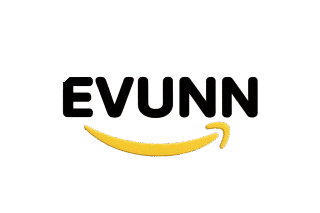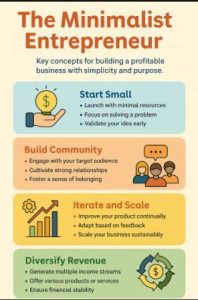Minimalist Entrepreneur Summary
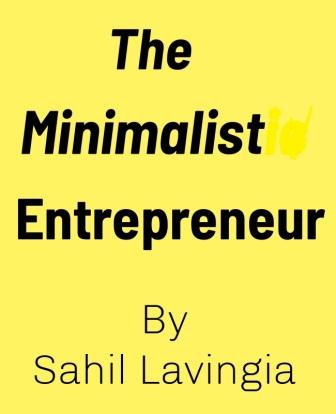
Create something useful, and don’t be afraid to ask people to pay for the value you’re giving them.
Summary of The Minimalist Entrepreneur
Too busy to read another business book?
Totally get it. Life’s full. Your to-do list is bursting. But if you’ve ever thought about starting something of your own—with zero investors, no fancy office, and just your laptop—The Minimalist Entrepreneur might be the book you didn’t know you needed.
This Minimalist Entrepreneur summary gives you the gold without the fluff. And hey—once you get a taste, you just might want to grab the full book for your nightstand (or your next power walk).
Let’s dive in.
Why We Recommend this Book
After reading this book, many readers say they finally gave themselves permission to launch small ideas instead of waiting to build the “next big thing.
It has helped people realize they don’t need to be the next Facebook to start and run a profitable business that helps them live the life they love.
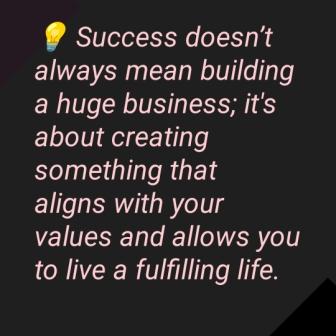
Questions to ask yourself before reading The Minimalist Entrepreneur Summary
- Why do I want to be an entrepreneur? Is it for freedom, impact, income, creativity—or all of the above?
- Do I have a problem I care about solving—or am I just chasing money?
- What problems or frustrations do I or my community face?
- Can I start small, with limited resources, and still add value?
Do I believe I need big funding or a perfect product to begin? - Do I have or know where to find a community that would support my idea?
Can I tap into existing communities (online or offline)? - Am I willing to serve a small audience really well before scaling?
- Am I willing to build slowly and sustainably rather than trying to grow fast?
Can I be patient with growth and focused on long-term value? - What’s my comfort level with bootstrapping instead of raising VC (Venture Capital)?
- Do I believe I can make a living doing something meaningful, even on a small scale? What lifestyle do I want, and can entrepreneurship help create it?
- What skills or tools do I already have that I can use to build something valuable?
- Am I ready to learn by doing instead of waiting for the “perfect moment”? What’s one small step I can take today?
- How comfortable am I with failure—and what would “failing” even mean to me?
What would I learn if things didn’t work out? Would I still consider the journey worth it?
The Minimalist Entrepreneur
Introduction
What if you could build a business without a co-founder, a pitch deck, or a single investor—and still make a good living doing what you love?
That’s exactly what The Minimalist Entrepreneur teaches you.
Written by Sahil Lavingia, the founder of Gumroad, this book is a blueprint for people who want to build small, profitable, meaningful businesses that fit their lives—not consume them.
Instead of chasing unicorn status or “scaling fast,” Sahil shows you how to:
- Start with a community, not a product idea
- Build only what you need to solve a real problem
- Find your first 100 paying customers manually (yes, DMs count!)
- Market by simply being yourself and sharing your journey
- Grow your business sustainably, without burning out
Whether you’re a freelancer, creator, side hustler, or a first-time founder, this book gives you the mindset and practical steps to start where you are, use what you have, and build something real.
It’s not just theory—it’s a deeply personal, honest guide from someone who’s done it. If you’ve been thinking, “I want to start something, but I don’t know where to begin,” this is your permission slip to finally go for it.
This book won’t just inspire you—it’ll hand you a simple, step-by-step map.
Read the summary if you’re short on time then grab the full book for a deeper insight.

Click on the Tabs Below to Read Minimalist Entrepreneur Summary
The Minimalist Entrepreneur is a practical guide that shows you how to build a profitable, purpose-driven business by starting small, serving a community, and growing sustainably—without needing investors or fancy tools.
Who should read this book:
- People who want to start a business but feel overwhelmed by the complexities of fundraising, scaling, and competition.
- Professionals transitioning from traditional employment to entrepreneurship.
- Individuals looking to turn a passion project into a profitable business.9-to-5 workers who want to build an additional income stream.
- People interested in testing business ideas without quitting their job.
- Those who prefer to bootstrap their business and remain independent.
Why you should read this book:
- Clarity on Business Models: Understand different ways to structure a business with minimal risk.
- Step-by-Step Frameworks: Concrete, easy-to-follow steps for launching and sustaining a business.
- Confidence in Starting a Business: Readers learn to overcome fears of entrepreneurship.
- Teaches how to create a business that lasts rather than one that burns out in pursuit of rapid growth.
Chapter 1: Start with Community
Main Idea:
Don’t start with a product. Start by serving a community.
Instead of trying to come up with the next big idea, look around you. What group of people do you already connect with? What problems do they face regularly? Start by being useful to them
Example 1:
Sahil built Gumroad, a platform for creators, after noticing many creators online struggling to sell their work. He didn’t build a product first. He just listened to creators in his community, saw their pain point, and built a simple tool they asked for.
Real world Example:
Think of a WhatsApp group of hairdressers in Lagos. If they keep complaining about how hard it is to manage bookings, you can create a basic tool (like a Google Form or Calendly link) to solve that. Boom — you’ve started a business.
Look for pain points in communities you’re already part of (church groups, Facebook groups, forums).
Offer helpful advice or tools. Listen before building anything.
Chapter 2: Build as Little as Possible
Main Idea:
Don’t overbuild. Create the simplest version of your solution and test it.
You don’t need a fancy website, logo, or app to start. Just solve the problem in the fastest, easiest way possible. This is called the Minimum Viable Product (MVP)
Example:
Before launching Gumroad officially, Sahil made a simple payment page that allowed people to buy a digital file. No big launch. No investors. Just a working solution
Real-World Example:
If you want to sell study guides, don’t start with building a website. Upload a PDF to Google Drive, make a payment link with Paystack or Flutterwave, and send it out. When you have validated your idea, you may then expand, build a website, add more features etc.
Use tools like WhatsApp, Notion, Google Docs.
Validate first — perfect later.
Ask: “What’s the fastest way I can help someone today?”
Chapter 3: Sell to Your First Hundred Customers
Main Idea:
Focus on real people, not metrics or followers.
Don’t chase “going viral.” Instead, talk to potential customers one-on-one. Manually help them. This builds trust and gives you honest feedback.
Example:
Sahil personally emailed and DMed hundreds of creators to test and buy Gumroad. It wasn’t scalable at first — but it worked.
Real-World Example:
A fitness coach looking to launch a course should talk to 20 friends who’ve asked for advice in the past. Offer a private coaching plan first before recording a video course.
Don’t wait for traffic.
Manually message people.
Sell in the DMs before building a sales funnel.
Chapter 4: Market by Being You
Main Idea:
Your best marketing tool is your story.
You don’t need to run ads or hire a marketer. Just be honest and share your journey — what you’re building, why you’re doing it, and what you’re learning.
Example:
Sahil shared screenshots of his revenue, product updates, and even failures on Twitter. People trusted him more for it and wanted to support his business.
Real-World Example:
An Instagram baker posting how they learned a recipe, what went wrong, and how they fixed it — this feels real. People relate and are more likely to buy.
Don’t try to look perfect.
Share your journey in real time.
People buy from people they trust.
Chapter 5: Grow Yourself and Your Business
Main Idea:
Grow your business in a way that also supports your life — not burns you out.
Business should give you freedom, not stress. Avoid chasing money so hard that you forget why you started. Build a business that matches your lifestyle.
Example:
Sahil talks about setting boundaries and not working 24/7, even when building Gumroad. He chose to grow slower but healthier.
Real-World Example:
A side hustler who chooses to take only 5 clients a month so they can spend time with family is doing it right. Don’t feel pressured to scale too fast.
You don’t need to “grind” 24/7.
Say no to things that don’t align with your life.
A simple, happy business is still success.
Chapter 6: Build the House You Want to Live In
Main Idea:
Don’t just build something that “works.” Build something you’re proud of.
Imagine your business is a house. Would you want to live there — or just flip it for cash? Create something sustainable, valuable, and meaningful.
Example:
Sahil built Gumroad with transparency, respect for creators, and a mission to empower — even when he could have sold or exited faster.
Real-World Example:
A course creator who offers refunds, supports students, and updates their material regularly is building a business that lasts.
Focus on long-term impact.
Build with purpose, not hype.
Create a business you’re proud to talk about.
Chapter 7: You Can Do This
Main Idea:
Minimalism in business is about clarity, focus, and starting now — with what you have.
You don’t need to wait for a big idea, investor, or team. You just need a community, a problem, and the willingness to help.
Sahil’s Message:
If you’ve ever sold a handmade item, taught someone something, or helped a friend — you’ve already started your entrepreneurial journey.
Implementation plan for Minimalist Entrepreneur. Here are things you need to start doing right from now:
1. Start with a Community, Not a Product
Why?
Most businesses fail because they build a product first and then try to find customers. Lavingia suggests starting with a community—people who share a common interest or problem—and then creating something they need.
Steps to Implement:
- Identify Your Ideal Community
- Look for a group of people you naturally engage with (e.g., small business owners, designers, fitness enthusiasts).
- Observe their common struggles and questions.
- Join relevant online spaces (Reddit, Facebook groups, Twitter communities).
- Engage and Provide Value (1-2 weeks)
- Start discussions, answer questions, and share useful insights.
- Offer free advice or small solutions (e.g., templates, checklists, or tips).
- Test Demand Before Building Anything (2-4 weeks)
- Ask the community if they would pay for a specific solution.
- Create a simple landing page or pre-order form.
- Collect emails of interested buyers before investing in a product.
Challenges & How to Overcome Them:
Hard to find the right community? → Explore different online platforms and track where engagement is highest.
Nobody is engaging with you? → Be more active and provide more free value before expecting engagement.
Metrics to Track Progress:
- Number of people engaging with your posts or responses
- Number of people who sign up for updates or pre-orders
- Direct messages or comments asking for help
2. Sell Something Small First (Start with Services or Digital Products)
Why?
Selling something small (like consulting, templates, or a digital product) allows you to validate your idea and generate income quickly without large upfront costs.
Steps to Implement:
- Choose a Small, Low-Risk Product (1 week)
- Digital templates (e.g., social media templates, business plans).
- Consulting or coaching (e.g., 1-hour sessions on a skill you have).
- A small eBook or online course on a topic you know well.
Create and Sell It Quickly (2-4 weeks)
- Use free tools (Google Docs for eBooks, Canva for templates, Zoom for coaching).
- Price it affordably (e.g., $10-$50 for digital products, $50-$200 for consulting).
- Sell directly to your growing community (via Twitter, Instagram, or a landing page).
- Iterate Based on Feedback (Ongoing)
- Ask buyers what they liked and what could be improved.
- Adjust the product or service based on real customer input.
Challenges & How to Overcome Them:
Fear of charging money? → Start with a low price or a pay-what-you-want model.
Struggling to make sales? → Offer it to people who already trust your advice online.
Metrics to Track Progress:
- Number of first-time customers
- Total revenue earned from initial sales
- Customer feedback and repeat purchases
3. Build in Public and Share Your Journey
Why?
Sharing your journey builds trust, attracts customers, and creates accountability.
Steps to Implement:
- Pick a Platform to Share On (Immediately). Twitter (great for quick updates). LinkedIn (for professional audiences). Instagram or TikTok (if your business is visual).
- Post Regular Updates (3-5x per week) (Ongoing)
- Share lessons learned, mistakes, wins, and behind-the-scenes work.
- Ask for community feedback on product ideas.
- Engage with followers who comment or ask questions.
Create Simple, Engaging Content (1-2 weeks to refine your approach). Create:
- Short, clear posts (e.g., “Launched my first product today! Here’s what I learned…”).
- Screenshots, videos, or quick polls.
- Highlight customer success stories.
Challenges & How to Overcome Them:
Not sure what to post? → Start by documenting what you’re working on each day.
Fear of judgment? → Remember, transparency builds trust. People appreciate honesty.
Metrics to Track Progress:
- Number of followers and engagement on posts
- Direct messages from potential customers
- Increase in traffic to your product pages
4. Keep Costs Low and Profit Margins High (The Lean Mindset)
Why?
A minimalist business should be profitable from day one by keeping costs low.
Steps to Implement:
- Use Free or Low-Cost Tools (Immediately)
- Free website builders (Carrd, Gumroad, Notion).
- Free design tools (Canva, Figma).
- Minimalist accounting tools (Google Sheets or Wave Accounting).
- Outsource Only When Necessary (1-3 months)
- Automate tasks with AI tools.
- Hire freelancers only when you have steady revenue.
Keep Marketing Simple (Ongoing)
- Organic marketing via Twitter, Reddit, or forums.
- Direct outreach to potential customers.
Challenges & How to Overcome Them:
Tempted to spend on fancy tools? → Ask: “Do I need this to make my first sale?“
Marketing feels overwhelming? → Start with one platform where your audience is most active.
Metrics to Track Progress:
- Monthly business expenses vs. revenue
- Number of sales generated from organic marketing
- ROI on tools or freelancers hired
5. Scale by Automating and Delegating
Why?
Once your business is making steady revenue, you should remove yourself from daily operations and scale efficiently.
Steps to Implement:
- Identify Repetitive Tasks (1-2 months in business). Customer support? → Use chatbots or FAQs. Social media posting? → Schedule posts with Buffer or Hootsuite.
Delegate or Automate (3-6 months in business)
- Hire a virtual assistant for admin work.
- Use Zapier to connect tools (e.g., automate email responses).
- Develop Systems for Scaling (Ongoing)
- Create standard processes (e.g., how to onboard new clients).
- Gradually step back and focus on strategy.
Challenges & How to Overcome Them:
Hard to let go of control? → Start with small, low-risk tasks.
Unsure if you can afford to hire help? → Outsource only when revenue is consistent.
Metrics to Track Progress:
- Number of hours saved per week through automation
- Increased revenue after delegating tasks
- Business growth with reduced personal workload
How to Get Started Today
- If you’re just starting, focus on finding a community and selling something small.
- If you’re already selling, start building in public and refining your marketing.
- Once you’re making steady income, automate and scale for long-term growth.
Here are books similar to
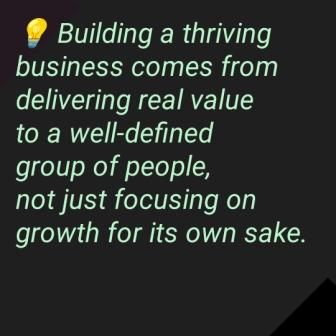
About the Author
Sahil Lavingia is an entrepreneur, angel investor, painter, and writer. He is best known as the founder of Gumroad, a platform that enables creators to sell their work directly to consumers.
Prior to founding Gumroad, Lavingia was the second employee at Pinterest, where he worked as a designer and engineer. He currently resides in Beaverton, Oregon.
The Minimalist Entrepreneur is Lavingia’s first published book. Through this work, he shares insights from his entrepreneurial journey, emphasizing sustainable and community-driven business practices.
Book Details
Title: The Minimalist Entrepreneur: How Great Founders Do More with Less
Publisher: Portfolio Amazon
Publication Date: October 26, 2021
Format: Available in Hardcover, Paperback, Kindle Edition, and Audiobook
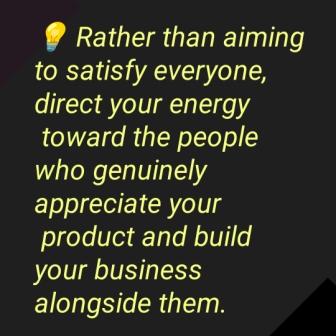
Course Curriculum
The Minimalist Entrepreneur Summary Quiz
-
Start Minimalist Entrepreneur Summary Quiz
Your Next Read

